December 22, 2017
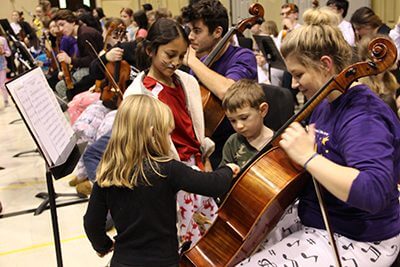 by Leah Abbe Bloem, Orchestra Director
by Leah Abbe Bloem, Orchestra Director
Pajamarama is pure joy at its finest! This year’s event will be once again combined with the Lower School Admission Preview and held on Thursday, February 1. The evening will begin at 5 PM for prospective families and 5:30 PM for current families.
This Mounds Park Academy original event is a concert created by Upper School orchestra students for Lower School students and their families. The creative endeavor gives Upper School students a chance to entertain and engage with the younger children with unabashed delight. They get to remember what it was like to be a little kid, hearing an orchestra for the first time, in such a welcoming, happy, and fun atmosphere.
Celebrating the MPA Community
We are very fortunate to have pre-kindergarten through high school students all on one campus, which builds a strong sense of community that feels like home. The Upper School orchestra students learn the music and plan a carnival with the understanding that the performance is not about them, but rather what they are giving to, and sharing with, the broader community.
The strong connection between Upper and Lower School students is evident every day at MPA, including at this event. Each student is kind and supportive of one another. At the event, the little ones are encouraged to try games again and again until they win, with cheers from the older students. Even those waiting in line will tell their peers in front of them to try again if they didn’t win the first time.
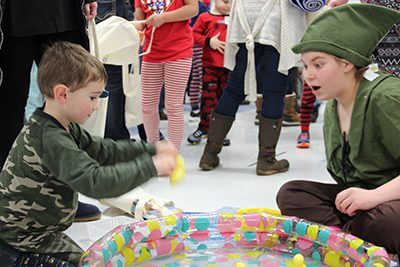
Experiencing the Joy of Musical Performance
Pajamarama is important because it gives the Upper School students a chance to look past the technical side of music education and experience the joy of sharing a musical performance. It also provides the opportunity for the orchestra students to really consider who their audience is and create an experience for them. The Upper School students learn about games and music that they may not even know in order to make each and every audience member feel valued and celebrated. They enjoy having the chance to give back to a school and community they love so much.
Creativity at Mounds Park Academy
Pajamarama began as a Disney concert approximately ten years ago. When I started teaching the orchestras four years ago, I decided to add the carnival portion to the night as well as to make the performance more interactive.
In most ensembles, it is common for the director to make the majority of the decisions regarding music and programming. However, for this performance almost all of the games and music have been planned, designed, and carefully developed by the Upper School orchestra students. Consequently, it is a powerful exercise in directing an entire artistic experience that they then perform for the community. The Upper School students both embrace their honed musical and artistic skills and simultaneously return to the delight of their youth through the games and activities with their younger friends.
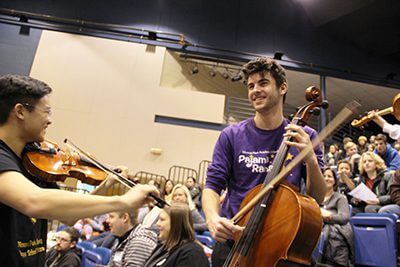 Delighting Kids of All Ages
Delighting Kids of All Ages
Students and parents alike love the performance. Upper School parents tell me how much fun it is to watch their child act like a little kid again and jump right into all the games, dancing, and singing. It is a reminder that we are all kids at heart and that we don’t have to grow up too fast. Along with the carnival, we also have milk and cookies at the end of the night, while our characters read bedtime stories.
At first glance, one would assume that the Lower School students enjoy the performance the most. However, watching these high-school-age students interact with their younger counterparts always proves that they are just as excited as the grade school students. In rehearsals, the Upper School students are slightly hesitant to sing songs by Raffi and dance to the Hokey Pokey while trying to play their instrument, but once they get a chance to dance and sing with the younger kids, one can see nothing but smiles on all of their faces.
Prospective families should RSVP in advance here! We look forward to welcoming you to Pajamarama!
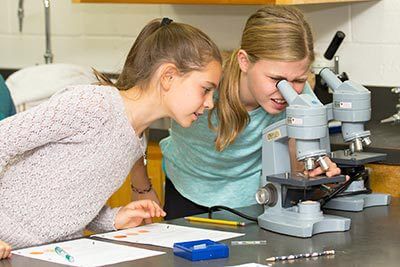 by Erica Brewinski, Middle School Director
by Erica Brewinski, Middle School Director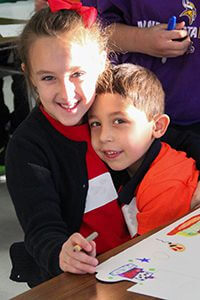 If this is your first time hearing of “The Great Kindness Challenge,” it can be described in many ways. By definition, it is an annual, nation-wide initiative that takes place at the end of January. To those who see our Lower School students participating, it is one week dedicated to enhancing a pervasive culture of kindness in our school. To everyone who witnesses the Challenge taking place, it is a system of encouragement for our littlest minds to consider how their random acts of kindness add up. Lower School students are taking action and participating this week, as kindness is a core principle of their CHAMP program.
If this is your first time hearing of “The Great Kindness Challenge,” it can be described in many ways. By definition, it is an annual, nation-wide initiative that takes place at the end of January. To those who see our Lower School students participating, it is one week dedicated to enhancing a pervasive culture of kindness in our school. To everyone who witnesses the Challenge taking place, it is a system of encouragement for our littlest minds to consider how their random acts of kindness add up. Lower School students are taking action and participating this week, as kindness is a core principle of their CHAMP program.
 The academic emphasis on only reading, writing, and arithmetic is long gone; the emphasis today is broader and more nuanced than these foundational skills encompass. Some schools, including Mounds Park Academy, are even broadening the skills identified in the “21st Century Skills” movement, commonly known as “the 4 Cs” or critical thinking, communication, collaboration, and creativity, to include two additional Cs: culture and connectivity.
The academic emphasis on only reading, writing, and arithmetic is long gone; the emphasis today is broader and more nuanced than these foundational skills encompass. Some schools, including Mounds Park Academy, are even broadening the skills identified in the “21st Century Skills” movement, commonly known as “the 4 Cs” or critical thinking, communication, collaboration, and creativity, to include two additional Cs: culture and connectivity.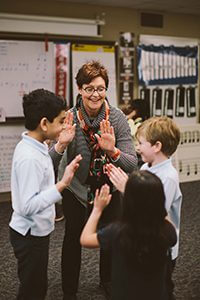 by Dr. Bill Hudson, Head of School
by Dr. Bill Hudson, Head of School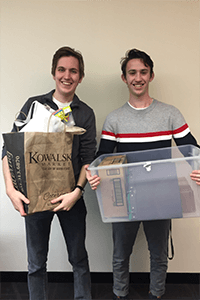 Mounds Park Academy Upper School students Ben Yoch and Ian Beauchane are using the local Super Bowl and Vikings hype to make a difference in the community. The two are currently participating in the NFL Super Kids-Super Sharing project, partnering with the NFL and Vikings to help underfunded schools and they need your help.
Mounds Park Academy Upper School students Ben Yoch and Ian Beauchane are using the local Super Bowl and Vikings hype to make a difference in the community. The two are currently participating in the NFL Super Kids-Super Sharing project, partnering with the NFL and Vikings to help underfunded schools and they need your help.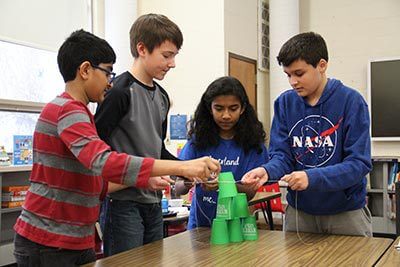 by Dr. Bill Hudson, Head of School
by Dr. Bill Hudson, Head of School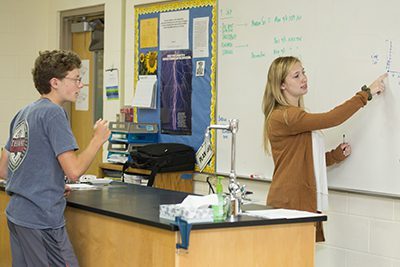 by Dr. Bill Hudson, Head of School
by Dr. Bill Hudson, Head of School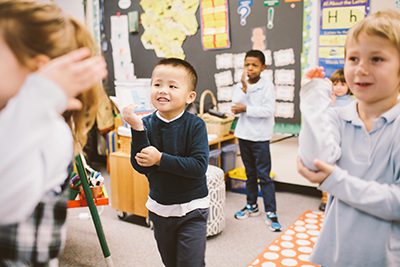 When we reflect on the benefits of private school in general, and MPA specifically, the word “connection” comes to mind. When we talk about connection in the context of private school benefits, we see it as a thread through all that we do and offer. We see creating connections as central to the benefits of a private school education.
When we reflect on the benefits of private school in general, and MPA specifically, the word “connection” comes to mind. When we talk about connection in the context of private school benefits, we see it as a thread through all that we do and offer. We see creating connections as central to the benefits of a private school education. by Leah Abbe Bloem, Orchestra Director
by Leah Abbe Bloem, Orchestra Director
 Delighting Kids of All Ages
Delighting Kids of All Ages